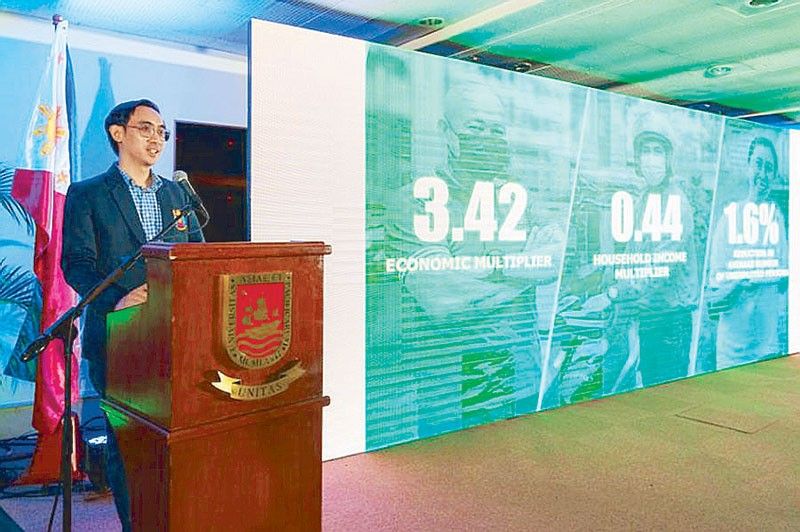Grab contributes up to 0.3 percent to GDP – study
Elijah Felice Rosales – The Philippine Star March 13, 2024 | 12:00am MANILA, Philippines — Ride-hailing giant Grab Philippines contributes as much as 0.3 percent to the economy, as a peso spent on the platform generates an additional P3.42 in output, according to a recent report. In a study, the University of Asia and the […]


Elijah Felice Rosales – The Philippine Star
March 13, 2024 | 12:00am
MANILA, Philippines — Ride-hailing giant Grab Philippines contributes as much as 0.3 percent to the economy, as a peso spent on the platform generates an additional P3.42 in output, according to a recent report.
In a study, the University of Asia and the Pacific (UA&P) found that Grab managed to contribute an average of 0.07 to 0.3 percent to the economy—measured as gross domestic product (GDP)—between 2019 and 2021.
UA&P program coordinator for entrepreneurial management Gregorio Mabbagu said the app chipped in between P37 billion and P165.6 billion to GDP during the period.
Also, Mabbagu said Grab produced a multiplier effect of 3.42 times between 2019 and 2021, beating other transport units like road freight and bus lines. This means that for a every P100 spent on the platform, the economy receives an extra P342 in output.
On income, the study estimated that Grab chipped in an average of 0.1 to 0.17 percent to total household earnings, translating to as much as P40.3 billion in value.
Based on this, Grab’s multiplier effect reached 0.44 times on income.
Mabbagu said that for every peso spent on Grab, it goes beyond covering the cost of the service, passing around an additional P0.44 to workers in the ride-hailing market.
On employment, the study found that Grab extended livelihood to up to 50,976 Filipinos yearly, preventing the unemployment rate from rising by as high as 0.6 percent.
In 2023, Grab committed to President Marcos that it would raise its investments in the Philippines, and this pledge is expected to create at least 500,000 jobs for Filipinos.
Mabbagu said it is likely that Grab would expand its share to the GDP in the future, as Filipinos are becoming more and more dependent on digital services.
However, there is also a probability that contribution will go down once the government completes some of its transport projects.
Mabbagu said UA&P made use of input-output analysis in developing the study, relying on data from the Philippine Statistics Authority and Grab. He said the goal of the undertaking is to examine Grab’s impact on the economy.
To date, Grab manages a fleet of around 40,000 drivers that cater to the transport network vehicle service demand in Metro Manila, but has yet to return to the pre-pandemic high of about 60,000 in 2019.
Grab is the largest transport app in Southeast Asia, offering ride-hailing options to more than 400 cities and municipalities in the region.














